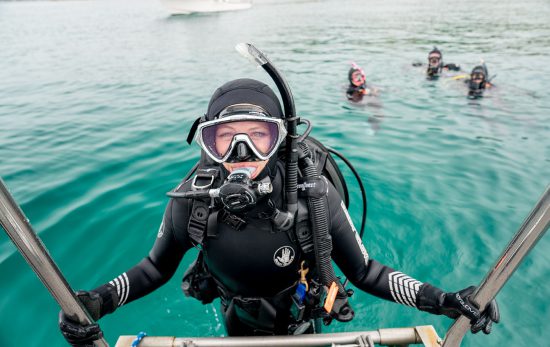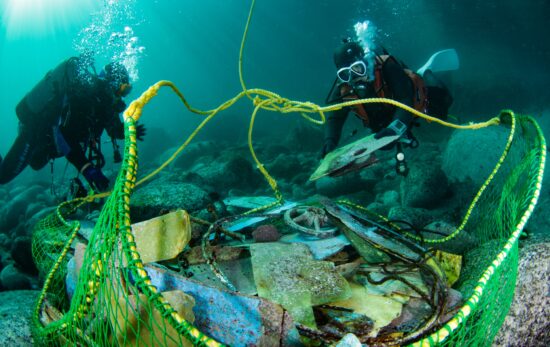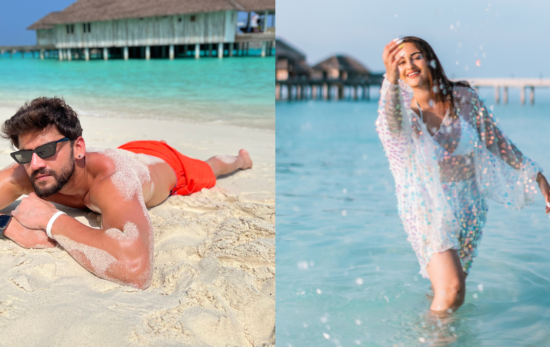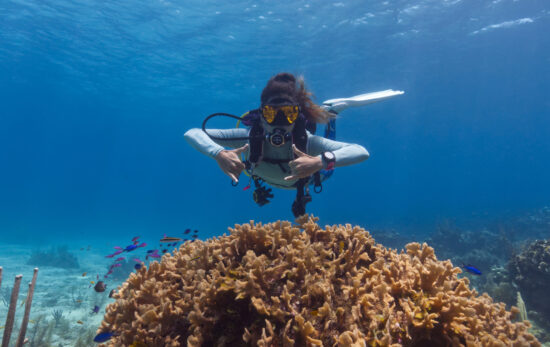Written by guest blogger and AmbassaDiver Akim Ladhari
There’s a large range of equipment and brands entry level freedivers can use, depending on location and type of freediving to be practiced, but first let’s look at the difference between freediving and scuba diving equipment. Freediving equipment is usually designed to be very comfortable, streamlined and light to wear, to enhance performance with minimal effort. For example, freediving fins have long blades made of plastic, carbon fibre or fiberglass. They will also often have a silicon (or other smooth material) foot pocket. This is so the foot is comfortable and to avoid discomfort after several hours at sea. Whereas scuba diving fins have a shorter blade and can also be made out of rubber.
Comfort is very important in freediving. As you will learn in your PADI Freediver course “relaxation” is key to freediving and having an enjoyable experience. If you cannot relax due to uncomfortable gear it could spoil your freediving experience. In fact, one of the main stresses for freedivers is bad or ill-fitting equipment.
I often say to my students that “Freediving equipment should be as comfortable as possible. So comfortable, in fact, it should feel like an extension of your body”
When choosing freediving equipment as a novice, is it highly recommended to take a freediving course with a PADI Freediver Instructor beforehand. This will give you the opportunity to learn about different brands of equipment and try them during the course. There’s a dedicated equipment chapter in the PADI Freediver course, where, with the help of your PADI Freediver Instructor, you will learn how to choose, adjust, use, and take care of your equipment.

The Three Essential Pieces of Freediving Equipment:
Mask
Snorkel
Fins
The Freediving Mask
The mask is the most important piece of freediving equipment because it’s the piece of kit that allows you to see efficiently underwater. When your eyes are in direct contact with the water they can’t focus properly and everything appears blurred. The mask creates an air space between the water and your eyes, allowing them to focus correctly, and see underwater. A freediving mask must always have a nose pocket that is easy to pinch for equalization.
3 Key points for choosing your freediving mask:
Air volume
When freediving we dive on a single breath. As you descend your mask will need to be equalized. This is achieved by breathing out through the nose. However, as you exhale to equalise it means there is less oxygen available to supply to your body. So, to make the freediving experience more comfortable and efficient, freediving equipment developers have created very low volume masks, which don’t need you to use a lot of precious air to equalize.
Comfort
One of the main priorities when choosing a mask is that it sits very comfortably on your face (to achieve this I would recommend a very smooth mask made of silicon material). An easy way to see if a mask fits the shape of your face is to take the mask, and with two hands hold it gently against your face, then inhale gently from your nose. If no air is leaking in, and you don’t have to continuously inhale, the mask should secure onto your face by itself after a few seconds of inhalation. If this happens then you know the mask is sealed properly. At this point no discomfort or tension should be felt from the mask where it is in contact with your face, as this tension will turn to pain after several hours in the water.
Tempered glass
During freediving, it’s not only your body that is under pressure; but your freediving equipment as well. Your mask lenses will be under pressure. To avoid them breaking, which can lead to your skin or eyes being injured, you should ensure the glass is marked with a “T”, which means it will not shatter under pressure or on impact. A few brands have also created plastic masks which are also resistant to pressure and impact.
Once you are ready to purchase a mask I would highly recommend that you buy directly from a diving equipment store so you can be sure the mask is a specialised Freediving Mask. It’s also useful as a generally there’ll be an in-store specialist who can help you to choose the right one.
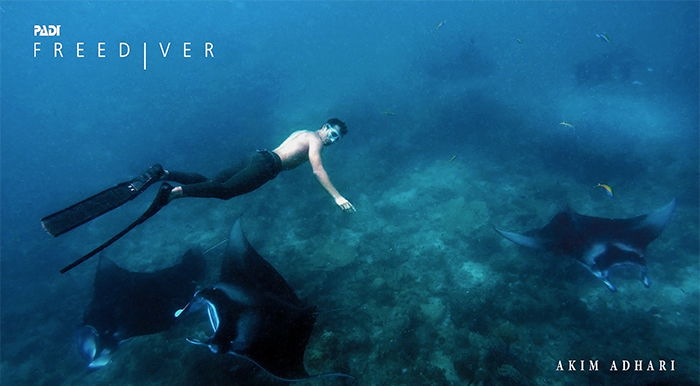
The Freediving Snorkel
In scuba diving you’ll find a wide range of types of snorkels on the market. In freediving the snorkel is all about simplicity and comfort. A freediving snorkel is a device that allows the freediver to breathe in a relaxed position with their face in the water.
To keep it simple, when you pick a snorkel choose one that is very comfortable in your mouth. The best ones for this are “medium-rigid” and, by this I mean, not too flexible and not too rigid; somewhere in-between.
Remember that you will keep the snorkel in your mouth for an extended period of time (that could easily add up to several hours during a day of freediving). So any scratches or scrapes may become an irritation or a cut and turn an enjoyable day freediving into an uncomfortable one.
The Freediving Fins
Freediving fins have become the symbol of freediving, just as the regulator and mask are for scuba diving. The most recognizable characteristic of a freediving fin is its long blade, usually up to 1/3 longer than a scuba diving fin blade. Freediving fins always have a full foot pocket; usually made of a smooth material and are more flexible than regular diving fins. This is to ensure a comfortable fit on the foot and to avoid inefficiency while kicking.
There are 3 different types of blade for the freediving fins:
- Plastic
- Carbon Fiber
- Fiberglass
Fiberglass and Carbon Fibre are for more advanced and deeper free dives. I wouldn’t recommend them for a novice freediver as they are, in general, three times more expensive than the plastic options. They’re also a lot more fragile and it’s often best to learn and develop advanced finning techniques before investing, as it is at this point when you will get the most out of them (and your money).
I would recommend considering purchasing Carbon Fibre or Fiberglass fins after your PADI Advanced Freediver course, or, better; PADI Master Freediver course.
How do you choose Freediving fins?
As with all sports equipment, freediving fins should be chosen for their comfort and efficiency rather than their look.
The first important element to think about is the foot pocket. Of course you have to choose the correct size but remember to try them on. If you can try them on dry and also wet (if your retailer allows) that’s best. When trying your fins on dry the best thing to do is to put them on as you would shoes. To test whether they fit properly take a long step forward, exaggerating the movement and moving slowly. If the foot pocket does not slip from the heel and doesn’t feel too tight then it should be the right size.
The second important characteristic is the blade stiffness.
For entry level freedivers it is recommended to start with soft or medium-soft blade stiffness, as usually the choice will be made depending on the freediving activity you’re undertaking and your abilities. For example, if you are going to swim a long distance on the surface with shallow dives it is better to use soft blades. However, if you are going to train on the line, or do several dives from an embarkation I would recommend using a medium-soft blade. It also depends on the strength and build of the freediver. If you’re an active person with well-developed leg muscles, you may feel more comfortable with a stiffer blade. The best way to find out what will suit you is to try different blades during your PADI Freediver course.
When you finally get the option to try your fins in the sea or pool make sure you don’t feel any discomfort or pain after several kicks or lengths. Any discomfort is usually felt on the “arch” of the foot, which could start as a strong tension and may result in pain after an extended period using the fins.
After reading this we hope you feel more comfortable when thinking about buying your own freediving equipment.
If you want to find out more about Akim, and freediving in general, this post might be of interest to you: Freediving with AmbassaDiver Akim Ladhari

